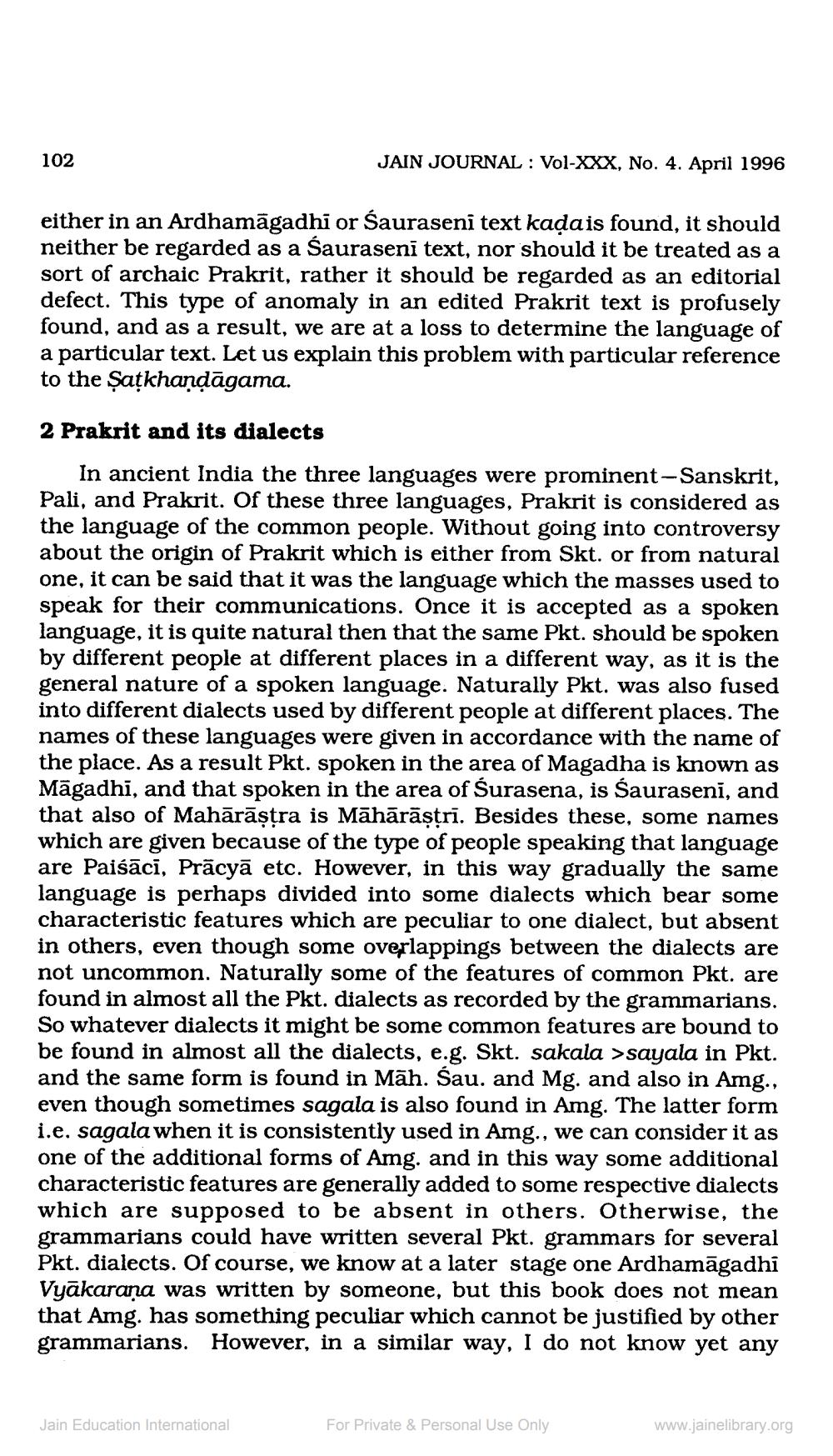Book Title: Jain Journal 1996 04 Author(s): Jain Bhawan Publication Publisher: Jain Bhawan Publication View full book textPage 4
________________ JAIN JOURNAL: Vol-XXX, No. 4. April 1996 either in an Ardhamāgadhi or Śauraseni text kaḍais found, it should neither be regarded as a Śauraseni text, nor should it be treated as a sort of archaic Prakrit, rather it should be regarded as an editorial defect. This type of anomaly in an edited Prakrit text is profusely found, and as a result, we are at a loss to determine the language of a particular text. Let us explain this problem with particular reference to the Satkhanḍāgama. 102 2 Prakrit and its dialects In ancient India the three languages were prominent-Sanskrit, Pali, and Prakrit. Of these three languages, Prakrit is considered as the language of the common people. Without going into controversy about the origin of Prakrit which is either from Skt. or from natural one, it can be said that it was the language which the masses used to speak for their communications. Once it is accepted as a spoken language, it is quite natural then that the same Pkt. should be spoken by different people at different places in a different way, as it is the general nature of a spoken language. Naturally Pkt. was also fused into different dialects used by different people at different places. The names of these languages were given in accordance with the name of the place. As a result Pkt. spoken in the area of Magadha is known as Māgadhi, and that spoken in the area of Surasena, is Śauraseni, and that also of Mahārāṣṭra is Māhārāṣṭrī. Besides these, some names which are given because of the type of people speaking that language are Paiśācī, Pracyā etc. However, in this way gradually the same language is perhaps divided into some dialects which bear some characteristic features which are peculiar to one dialect, but absent in others, even though some overlappings between the dialects are not uncommon. Naturally some of the features of common Pkt. are found in almost all the Pkt. dialects as recorded by the grammarians. So whatever dialects it might be some common features are bound to be found in almost all the dialects, e.g. Skt. sakala >sayala in Pkt. and the same form is found in Mah. Śau. and Mg. and also in Amg., even though sometimes sagala is also found in Amg. The latter form i.e. sagala when it is consistently used in Amg., we can consider it as one of the additional forms of Amg. and in this way some additional characteristic features are generally added to some respective dialects which are supposed to be absent in others. Otherwise, the grammarians could have written several Pkt. grammars for several Pkt. dialects. Of course, we know at a later stage one Ardhamāgadhi Vyakarana was written by someone, but this book does not mean that Amg. has something peculiar which cannot be justified by other grammarians. However, in a similar way, I do not know yet any Jain Education International For Private & Personal Use Only www.jainelibrary.orgPage Navigation
1 2 3 4 5 6 7 8 9 10 11 12 13 14 15 16 17 18 19 20 21 22 23 24 25 26 27 28 29 30 31 32 33 34 35 36 37 38 39 40 41 42 ... 55
